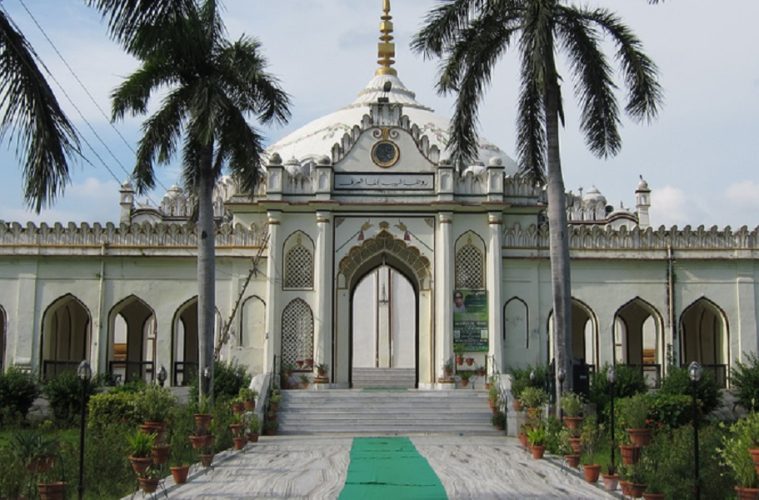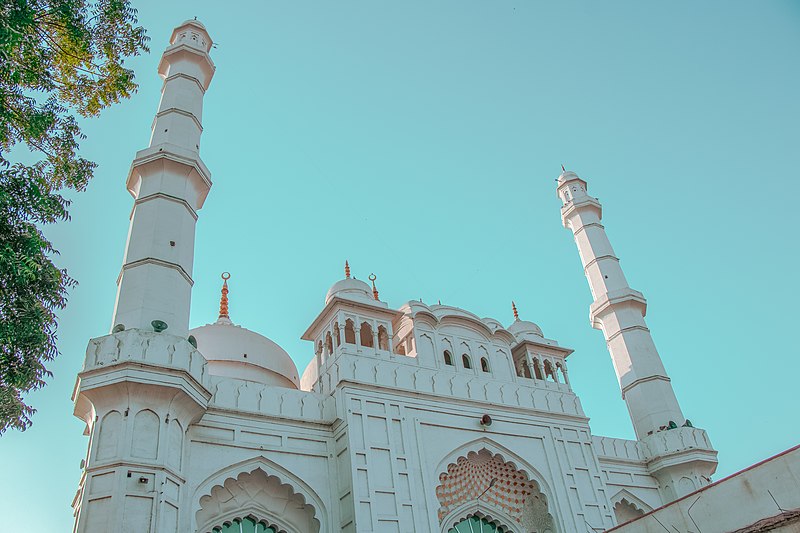We had crossed this mosque known as Teele Wali Masjid (Mosque on the Mound) in Lucknow, many a times while going to Chowk, but it never occurred to us that this location has an important role to play in the history of Lucknow.
While visiting Asafi Imambada some time ago, I took some pictures of this mosque and a golden dome structure which was next to this mosque. While cataloging the photographs, we realised that we had stumbled upon an unknown gem.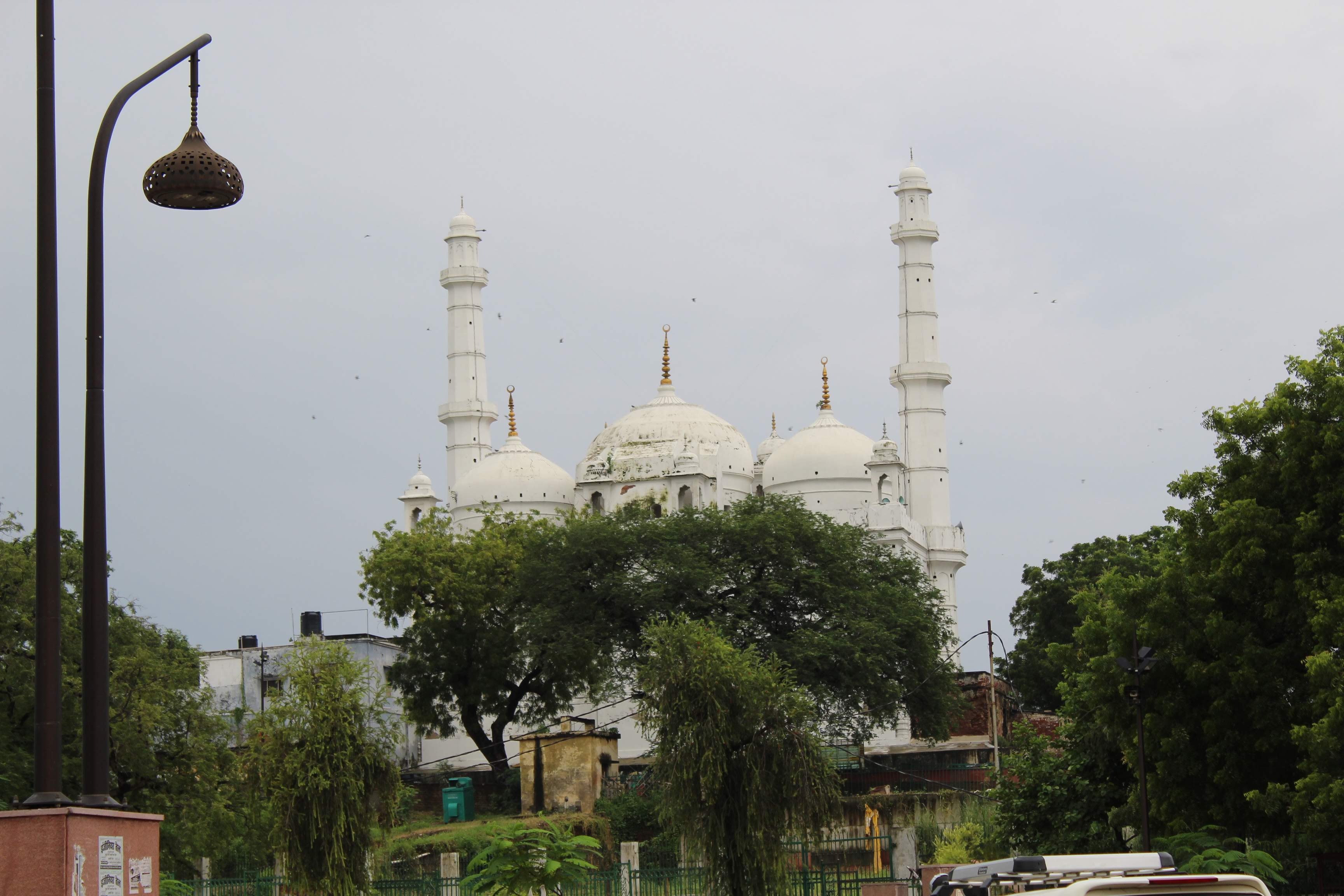
The settlement gradually grew. One finds mention of a small fort in this area which was called Likhna Quila (Likhna Fort), named after its Hindu architect Likhna, (Likhna could be the anglicised version of Lakhan, because we have never heard a Hindu proper name Likhna which in Hindi means writing). Somewhere during this period, the area started to be known as Lakhnau.
During the Mughal reign, the city gained importance. Babur visited Lucknow in 1529. Silver and copper mints were established during the period of reign of Sher Shah Suri and Humayun. Mughal Emperor Akbar rewarded Sheikh Abdur Rahim one of his favourite noble man with pargana of Lakhnau, Koraj and some parts of present day Bahraich. Sheikh Abdul Rahim (who is buried in Nidan or Nadaan Mahal tomb) is said to have built a fort called Macchi (fish) or Macchli Bhawan on the same location of Likhna Quila (he could have renovated, redeveloped, strengthened, enlarged the old fort). It enclosed the present day Hussainabad area. There is nothing left of this fort today. It was destroyed by the British during 1857-1858 CE.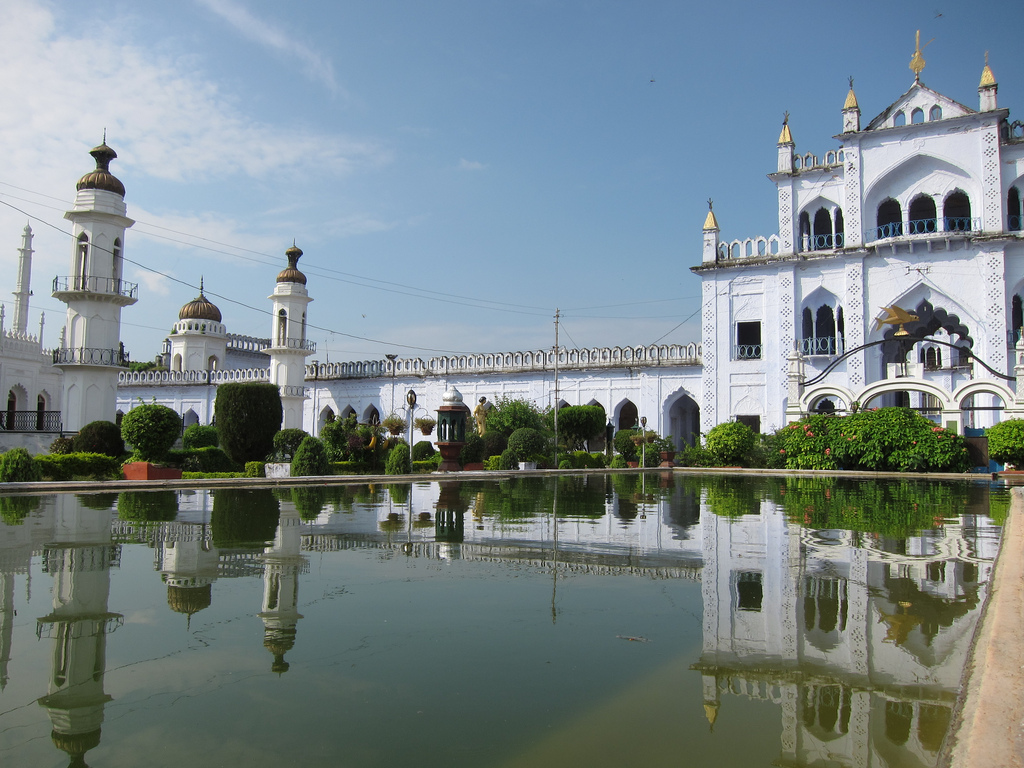
Right next to the Teele Wali Masjid is the mausoleum of Shah Pir Muhammad. He came to Lucknow during the reign of Aurangzeb, was the disciple of Sheikh Abdullah Chishti, Sayyah Dakhni, a religious teacher. He died in 1674 CE (1083 Hijri). The mausoleum has unique architecture – a large dome (now painted in golden colour) atop a tall cylindrical drum making it look like a light bulb. The mausoleum is built on a raised platform. There are 3 graves inside the mausoleum, one of the Shah, the other two probably of the Shaikhzada family or disciples of Shah Pir Mohammed. One of the grave has extremely intricate and beautiful inlay work on its marble surface, though the semi-precious stones have long been stolen. 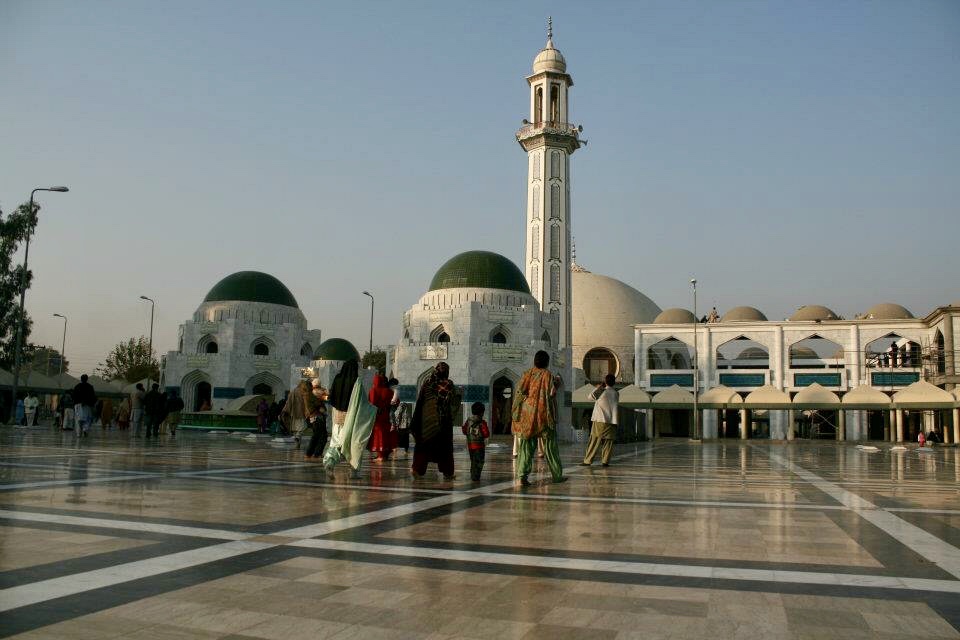
While visiting this place, please respect the religious sentiments. Non Namazi’s (people who do not perform Namaaz) might be stopped from entering in the mosque. There may be some other restrictions also on the basis of gender.


